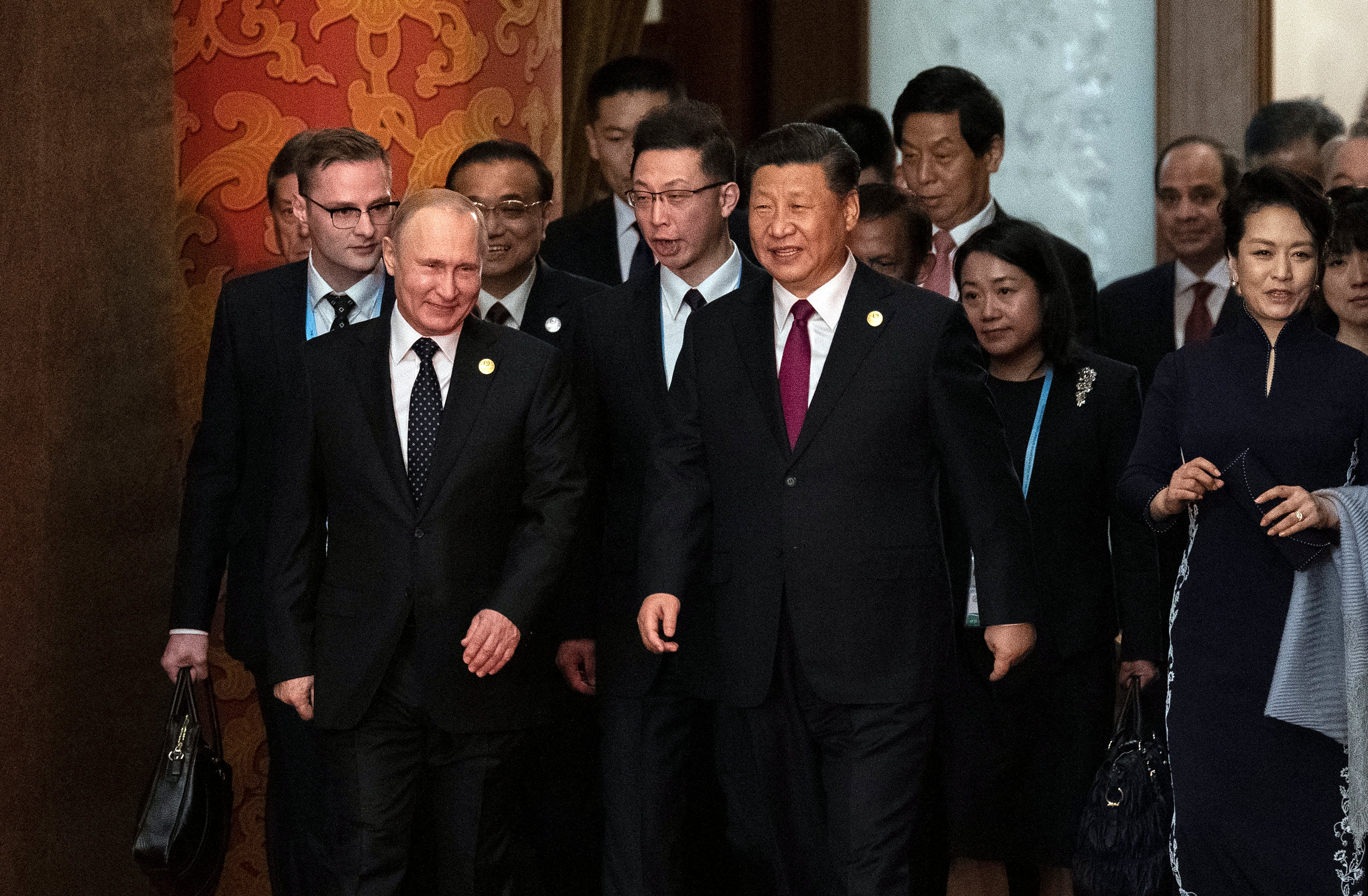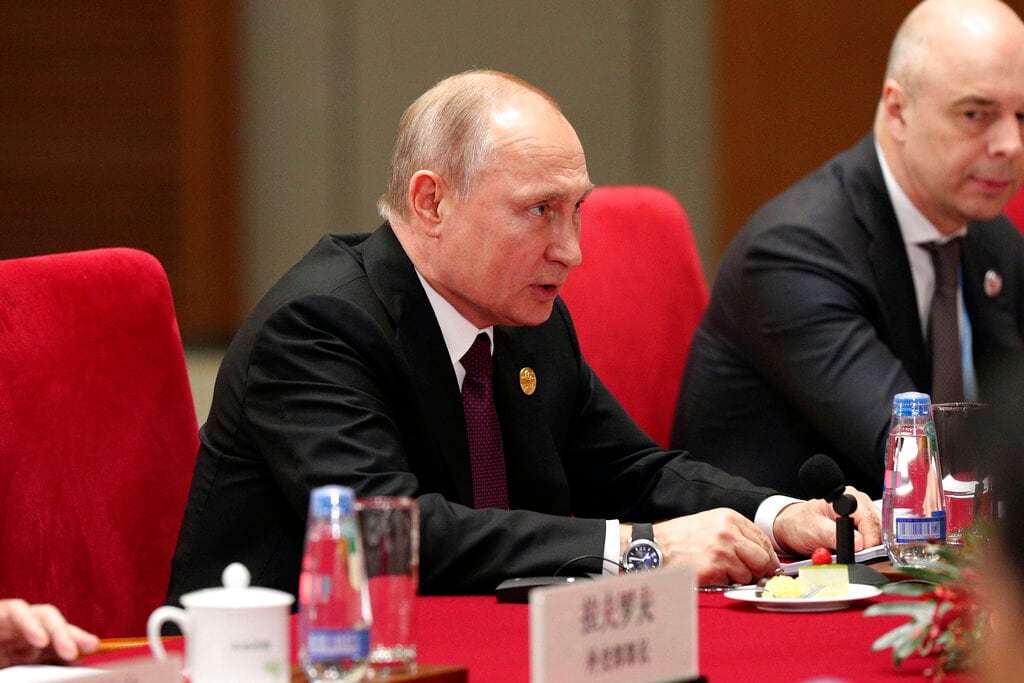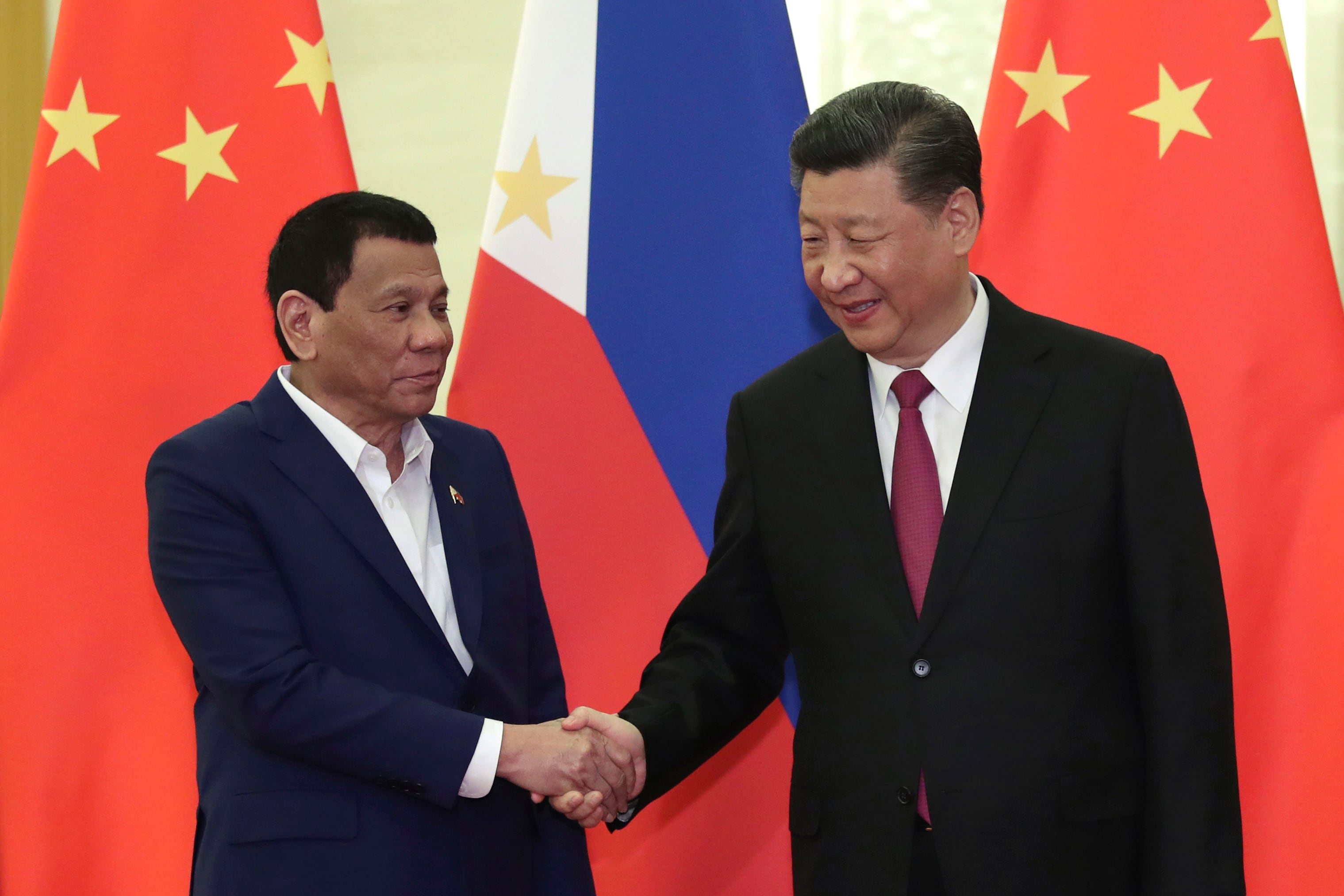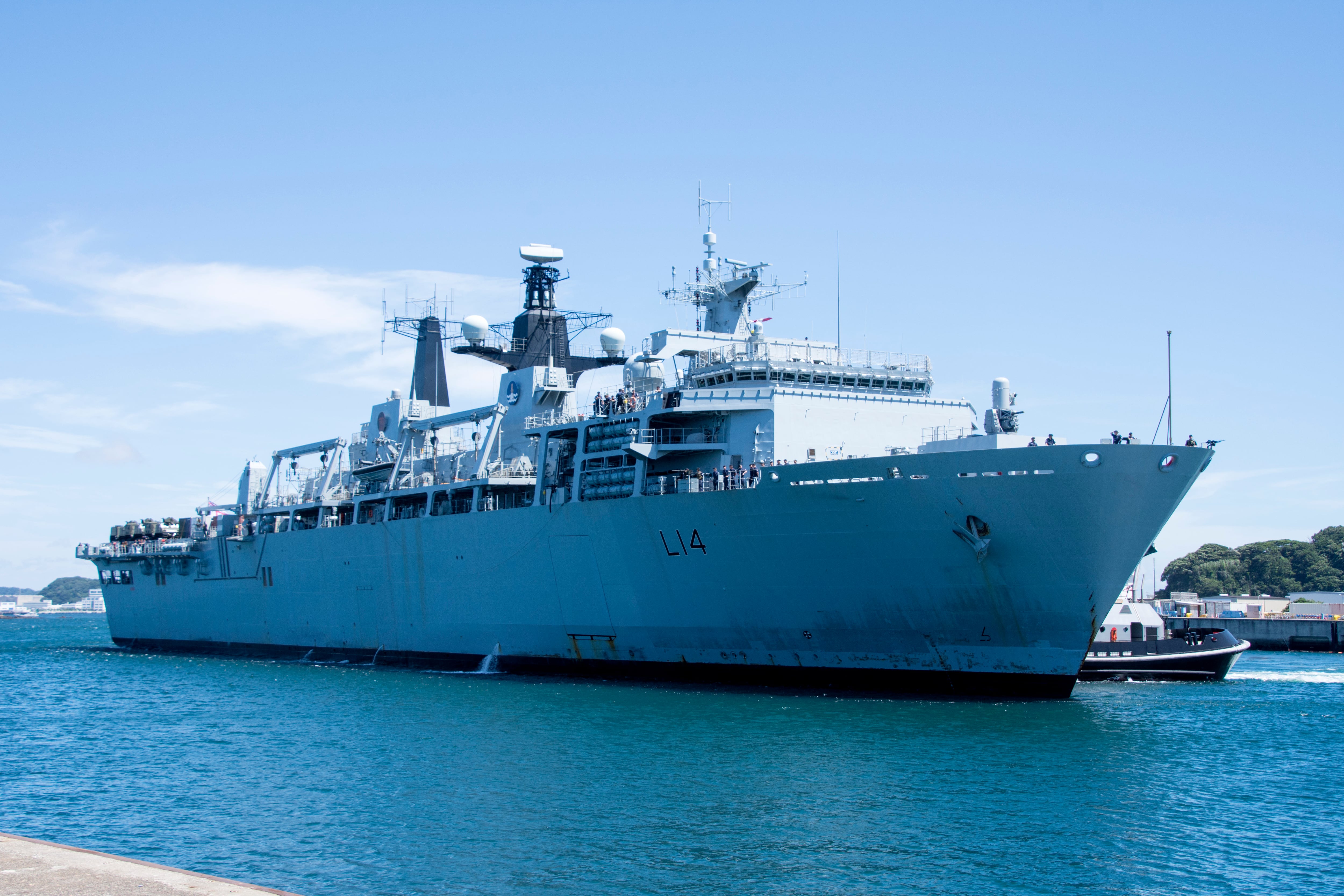BEIJING — This is a weekly look at developments in the South China Sea and nearby waters, where China is pitted against smaller neighbors in multiple disputes over islands, coral reefs and lagoons in waters crucial for global commerce and rich in fish and potential oil and gas reserves.
CHINA, RUSSIA PREPARE FOR JOINT NAVAL EXERCISES
A Russian naval task force has arrived in the northern Chinese port of Qingdao ahead of joint naval exercises this week that reinforce the growing bond between Beijing and Moscow.
During the drills, the sides will practice maneuvering and communicating and, “perform missile launches and deliver artillery fire at sea and air targets as well as practice search and rescue operations,” Russia’s state news agency Tass reported.
The Russian squadron is led by the guided-missile cruiser Varyag and also comprises the large landing ships Oslyabya, Admiral Vinogradov and Admiral Tributs, along with the corvette Sovershenny, salvage tug Igor Belousov and sea tanker Irkut, Tass said.

China has said the exercise will involve a total of 13 surface ships, 2 submarines, 7 fighter jets, 4 helicopters, and a unit of 80 marines.
Tass said aircraft from the Chinese naval aviation force would take part, along with diesel electric submarines from both sides.
Bonded by a common rivalry with the U.S., Moscow and Beijing have forged what they describe as a “strategic partnership,” expressing their shared opposition to the “unipolar” world — a term they use to describe perceived U.S. global dominance.
Russia has also offered rhetorical support for China’s position on its claims in the South China Sea.
Last September, about 3,200 Chinese troops joined Russia’s largest-ever war games in Siberia, in which nearly 300,000 Russian troops conducted drills.
RELATED

DUTERTE RAISES SOUTH CHINA SEA IN MEETING WITH XI
Philippine President Rodrigo Duterte raised his nation's concerns over territorial disputes in the South China Sea at a meeting with Chinese President Xi Jinping in Beijing that followed the signing of multi-billion dollar trade agreements.
The official Philippine News Agency said Duterte "reiterated to Xi his resolve to endeavor to make the West Philippine Sea (South China Sea) a sea of peace, stability, and prosperity."
"He expounded the need for both countries to exercise restraint and caution to avoid actions that could complicate situations," the agency quoted Duterte's spokesman Salvador Panelo as saying.
Duterte said in early April that he had few options other than to order troops to “prepare for suicide missions” if a Philippine-occupied island in the South China Sea comes under threat from China.
Despite such rhetoric, Duterte has generally adopted a non-confrontational approach in territorial spats with Beijing while seeking Chinese infrastructure funds, trade and investment.
He has declined to push a ruling that invalidated China's historical claims to the South China Sea through arbitration proceedings held by a tribunal in The Hague under the 1982 U.N. Convention on the Law of the Sea.
The Philippine News Agency quoted Panelo as saying that deals in energy and infrastructure signed during Duterte's visit totaled more than $12 billion, with the potential to create more than 21,000 jobs.

CHINA COMPLAINS OVER BRITISH NAVAL OPERATIONS
Chinese Vice Premier Hu Chunhua has blamed British activity in the South China Sea for a downturn in relations in comments at the start of a meeting with British treasury chief Philip Hammond.
Hu's comments Thursday appear to illustrate how China is now willing to permit assertions of its territorial claims to affect ties with nations from outside the region.
In his remarks to Hammond, Hu appeared to reference a mission by a British warship last August.
At the time, China denounced the passage of the British amphibious transport dock Albion close to Chinese-claimed islands in the South China Sea’s Paracel group.
That development was seen as possibly affecting negotiations on a post-Brexit trade agreement between the sides.
“It is regrettable that since August last year the relations between our two countries witnessed some fluctuations because of the South China Sea issue and a series of institutional dialogues and cooperation projects had to pause,” Hu said.

US WARSHIPS SAIL THROUGH TAIWAN STRAIT
Taiwan’s defense ministry says a pair of U.S. warships sailed through the Taiwan Strait over the weekend, in a move likely to spark protest from Beijing.
The ministry said the ships made the passage on Sunday, sailing from south to north through the waterway that divides the self-governing island from mainland China.
Beijing frequently objects to the movement of foreign military vessels in the strait based on its claim to Taiwan as its own territory to be annexed by force if necessary.
China has been increasingly willing to protest actions by foreign forces in areas it considers its home waters or spheres of influence.
That especially applies to the Taiwan Strait and South China Sea, which China claims almost in its entirety.
Last week, China complained to France about a French warship it said had passed through the Taiwan Strait. The April 7 incident marked a rare case of military friction between the two countries, which have previously held joint search and rescue exercises.
The Taiwan Strait enters the South China Sea at its southern end.
Control of both bodies of water is considered a linchpin of Chinese naval strategy.




